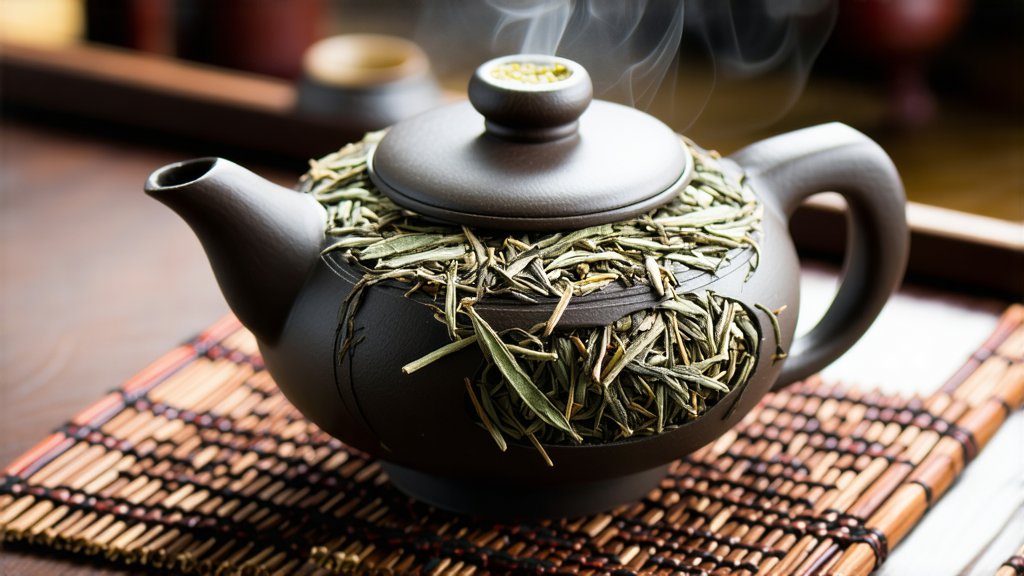
Pu-erh tea, a unique gem among the diverse spectrum of Chinese teas, stands as an emblematic representation of the country's rich tea heritage. Originating from the Yunnan province, this dark tea has garnered international acclaim for its distinctive flavor profile, complex aging process, and potential health benefits. In this article, we embark on a journey to explore the history, varieties, meticulous craftsmanship, and art of tasting Pu-erh tea, shedding light on its allure that transcends borders and generations.
A Glimpse into History
The story of Pu-erh tea traces back over a thousand years to the Tang Dynasty (618-907 AD), when tea was first cultivated in the mountainous regions of Yunnan. It wasn't until the Ming Dynasty (1368-1644 AD) that Pu-erh tea began to gain prominence as a distinct category. The name "Pu-erh" is derived from the market town of Pu'er, which served as a crucial hub for tea trade along the ancient Tea Horse Road. Over time, Pu-erh tea evolved into a cultural symbol, deeply intertwined with the local customs and traditions of the Yi, Hani, and Dai ethnic minorities.
Varieties of Pu-erh Tea
Pu-erh tea is broadly categorized into two main types: raw (Sheng) and ripe (Shou). Each variety undergoes a unique processing method, resulting in distinct flavors and aging characteristics.
-
Raw Pu-erh (Sheng): This type is crafted from sun-dried maocha (rough tea) leaves, which are then compressed into cakes, bricks, or tuocha shapes without further fermentation. Raw Pu-erh is prized for its potential to age gracefully over decades, developing a more refined taste and aroma with each passing year. Its flavor profile typically features a balance of bitterness, sweetness, and astringency, with hints of orchid, osmanthus, or camphor notes as it matures.
-
Ripe Pu-erh (Shou): In contrast, ripe Pu-erh undergoes a post-fermentation process known as "wet piling" or "wo dui," where piles of maocha leaves are moistened and turned regularly to accelerate microbial activity and enzymatic reactions. This process takes several months to complete and results in a tea with a deep reddish-brown liquor and a mellow, earthy flavor profile. Ripe Pu-erh is often enjoyed for its immediate drinkability and smoother taste compared to raw Pu-erh.
The Art of Craftsmanship
The production of Pu-erh tea is an intricate dance between nature and human skill, involving several stages:
-
Harvesting: Only the top one or two leaves and the bud are handpicked during specific seasons to ensure optimal quality.
-
Withering: Freshly picked leaves are spread out to wilt under the sun or indoors, reducing moisture content and softening the cell walls.
-
Rolling: The withered leaves are rolled into tight spirals to break down cell structures further, releasing enzymes necessary for fermentation.
-
Sun Drying: The rolled leaves are laid out to dry in the sun, preserving their natural flavors and preventing excessive oxidation.
-
Compression (for Sheng Pu-erh): The dried maocha is sorted by grade, then steamed and pressed into various shapes using traditional wooden molds.
-
Wet Piling (for Shou Pu-erh): Maocha is piled up in controlled environments, periodically turned and monitored for temperature and humidity to facilitate microbial fermentation.
-
Aging: Both raw and ripe Pu-erh can be further aged, allowing their flavors to evolve and deepen over time. Proper storage conditions—cool, dry, and free from strong odors—are essential for optimal aging.
The Art of Tasting Pu-erh Tea
Tasting Pu-erh tea is an immersive experience that engages all the senses. Here's a step-by-step guide to savoring its complexity:
-
Preparation: Use a Yixing clay teapot or a Gaiwan (a lidded bowl) to enhance the tea's aroma and flavor. Rinse the vessel with hot water before brewing.
-
Measurement: For a 150ml pot, use approximately 5 grams of loose leaf or a small piece of compressed tea. Adjust according to personal preference and tea strength desired.
-
Infusion: Boil water to around 95°C (203°F) for raw Pu-erh and slightly cooler for ripe Pu-erh. Steep the tea for about 5-10 seconds for the first infusion, then gradually increase steeping times for subsequent infusions.
-
Observation: Admire the color of the liquor, noting its clarity and depth. Raw Pu-erh typically displays a bright amber hue, while ripe Pu-erh boasts a deeper red-brown tone.
-
Aroma: Inhale deeply before sipping to detect the tea's fragrant bouquet, which may include earthy, woody, floral, or fruity notes depending on its age and variety.
-
Tasting: Take small sips, allowing the tea to coat your palate fully. Pay attention to the balance of astringency, sweetness, bitterness, and aftertaste. As you progress through multiple infusions, the tea's character will evolve, revealing new layers of flavor.
-
Reflection: Contemplate the tea's origins, the hands that crafted it, and the journey it took to reach your cup. This mindful appreciation deepens the connection between you and the tea.
In conclusion, Pu-erh tea is more than just a beverage; it is a living testament to China's ancient tea culture, embodying centuries of tradition, innovation, and artistry. Whether you're drawn to the youthful vibrancy of raw Sheng or the matured elegance of ripe Shou, exploring Pu-erh tea opens doors to a world of sensory delights and profound contemplation. As you embark on your own Pu-erh journey, remember that every sip tells a story—one that spans across time and transcends cultural boundaries.